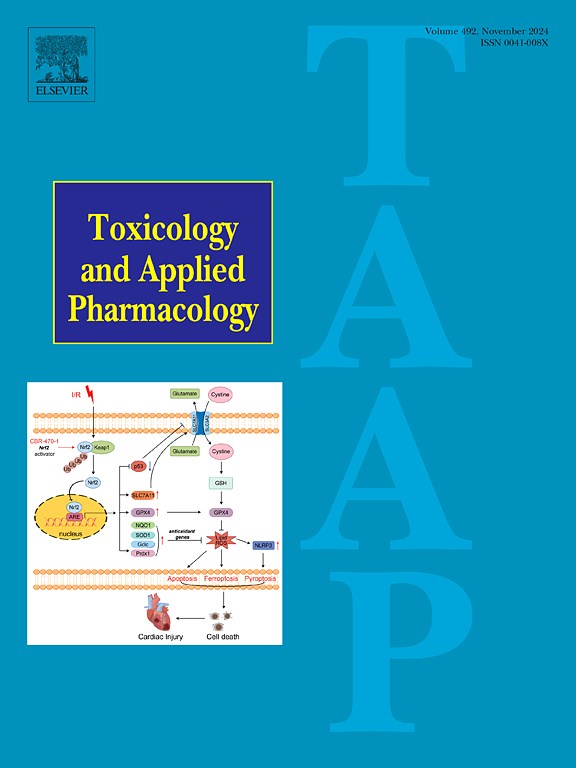Methyltransferase-like enzyme 14 exacerbates retinal ganglion cell damage and diabetic retinopathy through N6-methyladenosine-dependent upregulation of pleckstrin homology domain and leucine rich repeat protein phosphatase 2
IF 3.3
3区 医学
Q2 PHARMACOLOGY & PHARMACY
引用次数: 0
Abstract
N6-methyladenosine (m6A) modification of pleckstrin homology domain and leucine rich repeat protein phosphatase 2 (PHLPP2), mediated by methyltransferase-like enzyme 14 (METTL14), plays a critical role in regulating PHLPP2 expression across various pathological conditions. This study aims to ascertain whether METTL14 influences m6A methylation of PHLPP2 in diabetic retinopathy (DR) and to delineate the precise function of the METTL14/PHLPP2 axis in disease progression. METTL14 levels were observed to be elevated in retinas of DR rats and in HG-stimulated RGCs, coinciding with an increase in PHLPP2 m6A modification. Knockdown of METTL14 resulted in significant reductions in PHLPP2 expression and its m6A modification. Silencing METTL14 mitigated HG-induced damage in RGCs, which was linked to the inhibition of apoptosis, oxidative stress and inflammation. This protective effect could be negated through the restoration of PHLPP2. METTL14 knockdown modulated the AKT/GSK–3β/Nrf2 signal cascade through PHLPP2. Silencing METTL14 resulted in the downregulation of METTL14 and PHLPP2 in the retinas of DR rats, ameliorated visual function impairment and reduced the pathological alterations. These protective effects of METTL14 silencing against DR were also weakened when PHLPP2 was restored. Overall, these results suggest that suppressing METTL14 improves HG-induced damage in RGCs and protects against DR by downregulating PHLPP2 through m6A modification.

甲基转移酶样酶14通过n6 -甲基腺苷依赖性上调pleckstrin同源结构域和富亮氨酸重复蛋白磷酸酶2,加重视网膜神经节细胞损伤和糖尿病视网膜病变。
由类似甲基转移酶 14(METTL14)介导的褶曲蛋白同源结构域和富亮氨酸重复蛋白磷酸酶 2(PHLPP2)的 N6-甲基腺苷(m6A)修饰在调节 PHLPP2 在各种病理条件下的表达方面起着关键作用。本研究旨在确定 METTL14 是否影响糖尿病视网膜病变(DR)中 PHLPP2 的 m6A 甲基化,并明确 METTL14/PHLPP2 轴在疾病进展中的确切功能。在 DR 大鼠视网膜和 HG 刺激的 RGC 中观察到 METTL14 水平升高,与 PHLPP2 m6A 修饰的增加相吻合。敲除 METTL14 能显著减少 PHLPP2 的表达及其 m6A 修饰。沉默 METTL14 可减轻 HG 诱导的 RGC 损伤,这与抑制细胞凋亡、氧化应激和炎症有关。这种保护作用可通过恢复 PHLPP2 而被抵消。敲除 METTL14 可通过 PHLPP2 调节 AKT/GSK-3β/Nrf2 信号级联。沉默METTL14可导致DR大鼠视网膜中METTL14和PHLPP2的下调,改善视功能损伤并减少病理改变。当 PHLPP2 恢复时,沉默 METTL14 对 DR 的保护作用也会减弱。总之,这些结果表明,抑制 METTL14 可以通过 m6A 修饰下调 PHLPP2,从而改善 HG 诱导的 RGC 损伤并防止 DR 的发生。
本文章由计算机程序翻译,如有差异,请以英文原文为准。
求助全文
约1分钟内获得全文
求助全文
来源期刊
CiteScore
6.80
自引率
2.60%
发文量
309
审稿时长
32 days
期刊介绍:
Toxicology and Applied Pharmacology publishes original scientific research of relevance to animals or humans pertaining to the action of chemicals, drugs, or chemically-defined natural products.
Regular articles address mechanistic approaches to physiological, pharmacologic, biochemical, cellular, or molecular understanding of toxicologic/pathologic lesions and to methods used to describe these responses. Safety Science articles address outstanding state-of-the-art preclinical and human translational characterization of drug and chemical safety employing cutting-edge science. Highly significant Regulatory Safety Science articles will also be considered in this category. Papers concerned with alternatives to the use of experimental animals are encouraged.
Short articles report on high impact studies of broad interest to readers of TAAP that would benefit from rapid publication. These articles should contain no more than a combined total of four figures and tables. Authors should include in their cover letter the justification for consideration of their manuscript as a short article.

 求助内容:
求助内容: 应助结果提醒方式:
应助结果提醒方式:


